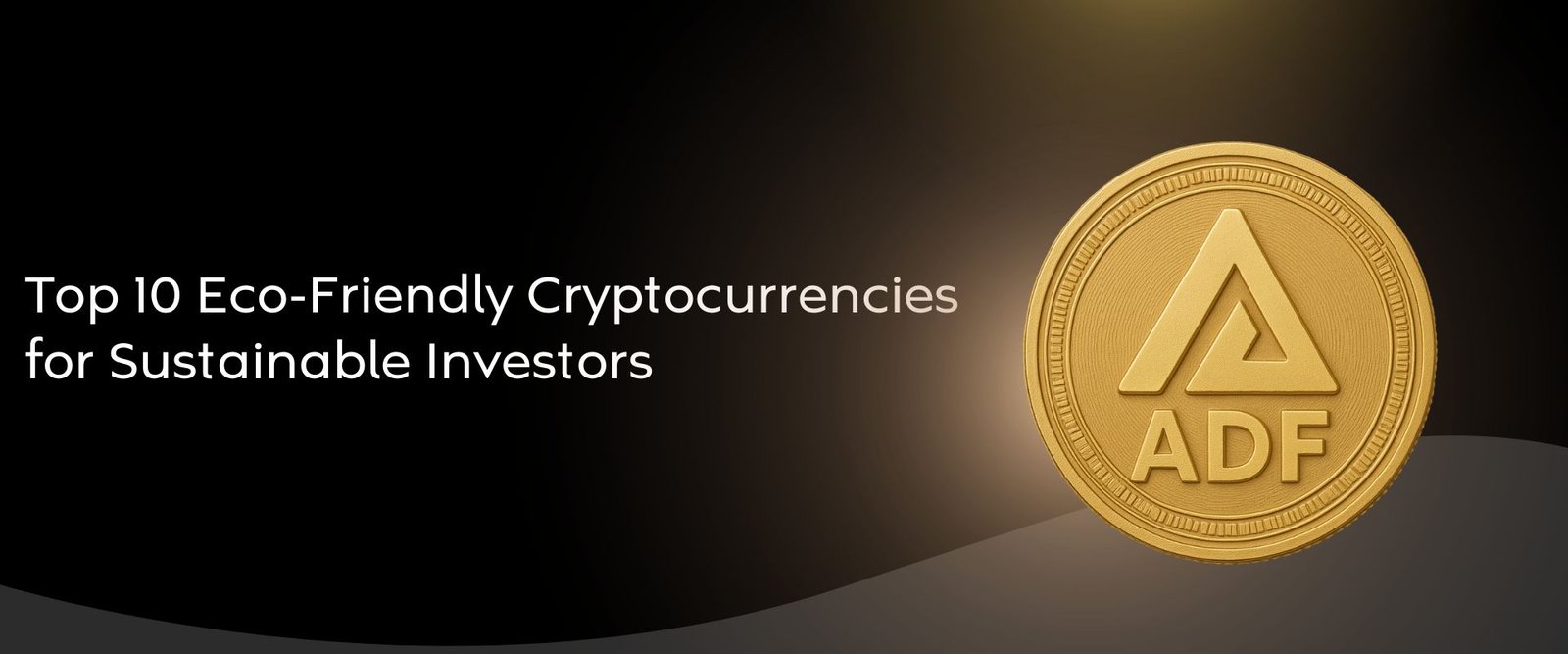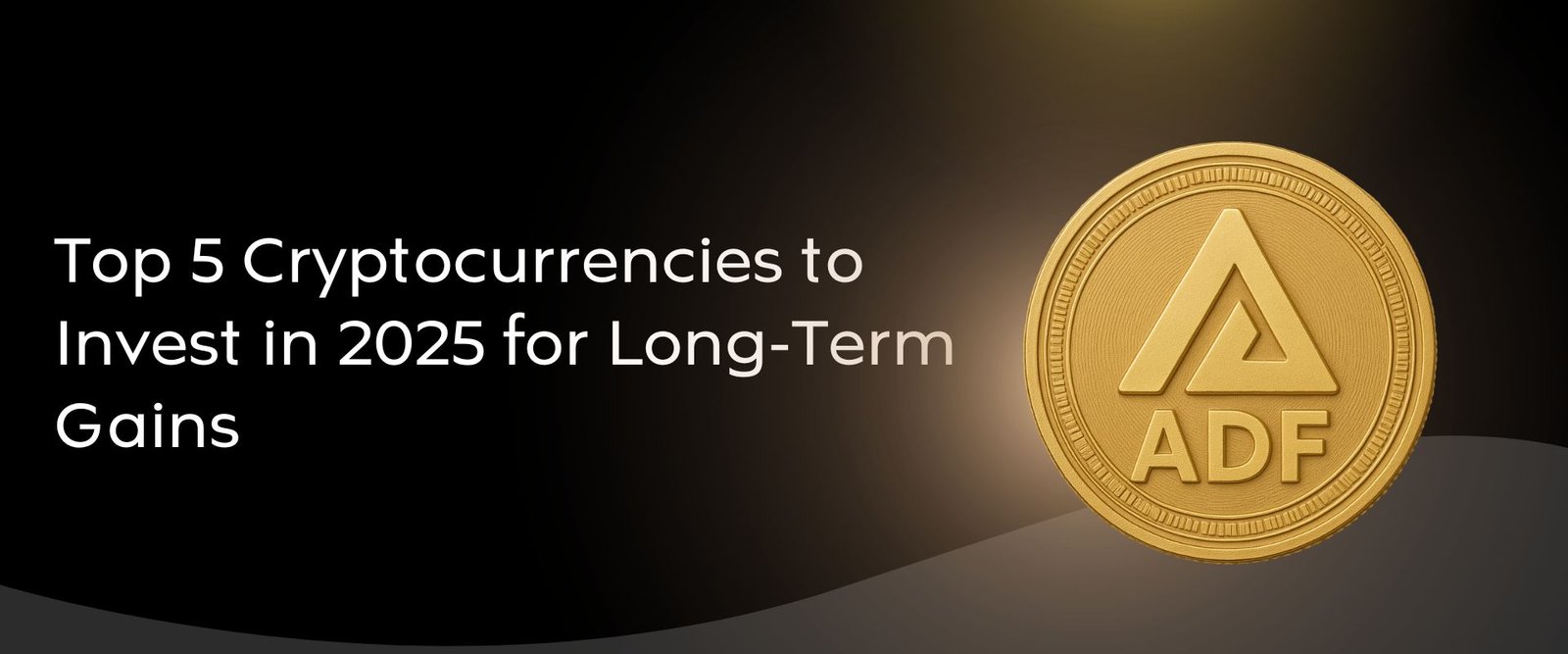Blog
How to Start a Building Materials Trading Company in Dubai ?

Dubai, known for its rapid development and construction boom, offers lucrative opportunities for entrepreneurs looking to venture into the building materials trading sector. Establishing such a company requires navigating through specific legal frameworks and understanding market dynamics. This guide aims to provide a clear pathway for setting up a building materials trading business in Dubai.
Building Materials Trading Company in Dubai
A building materials trading company in Dubai involves the import, export, distribution, and sale of various construction materials such as cement, steel, bricks, tiles, plumbing materials, electrical fittings, and more. The city’s strategic location, robust infrastructure, and business-friendly environment make it an ideal hub for such enterprises catering to both local construction projects and regional demand.
Activities Connected with a Dubai License for The Trading of Building Materials
Obtaining a trading license for building materials in Dubai allows businesses to engage in activities such as:
- Importing building materials from international suppliers.
- Exporting materials to neighboring Gulf countries and beyond.
- Wholesale distribution to construction companies, contractors, and retailers within Dubai.
- Retail sales to individual consumers through showrooms or online platforms.
- Storage and logistics management of building materials within designated free zones or mainland areas.
Navigating these activities requires compliance with Dubai’s regulatory requirements, including licensing, permits, and operational standards set by relevant authorities.
What are the Benefits of Starting a Building Materials Company in Dubai?
Starting a building materials trading company in Dubai offers several advantages:
- Strategic Location: Access to major markets in the Middle East, Africa, and Asia due to Dubai’s central geographical location.
- Business-friendly Environment: Streamlined procedures for business setup and a supportive regulatory framework encourage entrepreneurship.
- Growing Construction Industry: Continuous infrastructure development and urban projects drive demand for building materials.
- Tax Advantages: Dubai’s free zones offer 100% foreign ownership, tax exemptions, and customs duty benefits for companies engaged in import-export activities.
- Diverse Customer Base: Opportunities to serve a diverse customer base ranging from large-scale construction companies to individual contractors and DIY enthusiasts.
Process for Setting Up a Building Materials Company in Dubai
Setting up a building materials trading company in Dubai involves several key steps:
- Business Plan Development: Outline your business model, target market, pricing strategy, and operational plan.
- Choose Business Structure: Decide whether to establish your company in a free zone or on the mainland, considering factors such as ownership regulations and operational requirements.
- Name and Registration: Select a unique business name and register your company with the Department of Economic Development (DED) or relevant free zone authority. Reserve your trade name and obtain initial approval for business activities.
- Obtain Necessary Licenses: Apply for a trading license specific to building materials trading from the DED or relevant free zone authority. This license will specify your permitted activities and operational scope.
- Secure Business Premises: Lease suitable office space or warehouse facilities depending on your operational needs and location preferences. Ensure compliance with zoning regulations and lease agreements.
- Open Bank Account: Establish a corporate bank account in Dubai to manage financial transactions and comply with banking requirements.
- Hire Employees (if applicable): Depending on your business scale, recruit qualified staff for sales, logistics, and administrative roles. Ensure compliance with labor laws and visa regulations.
- Compliance and Permits: Obtain necessary permits such as import-export permits, environmental permits (if applicable), and any specific approvals required for handling certain types of building materials.
- Operational Setup: Set up inventory management systems, establish supplier relationships, and develop a distribution network to ensure efficient supply chain operations.
- Marketing and Launch: Develop a marketing strategy to promote your brand and services. Utilize digital platforms, participate in industry exhibitions, and build relationships with key stakeholders in the construction sector.
Documents Required for Building Materials Trading License in Dubai
When applying for a building materials trading license in Dubai, prepare the following documents:
- Passport copies of shareholders and directors
- Proof of residential address for shareholders
- Memorandum of Association (MOA)
- Lease agreement for business premises
- Trade name reservation certificate
- Detailed business plan
- Financial projections
- NOC from sponsor (if setting up on the mainland)
- Approval from relevant authorities for specific materials (if applicable)
By following these steps and ensuring compliance with regulatory requirements, entrepreneurs can successfully establish and operate a building materials trading company in Dubai. This guide provides a structured approach to navigating the complexities of starting a business in this thriving sector, leveraging Dubai’s dynamic market and strategic advantages. For personalized assistance in setting up your building materials trading company, consider partnering with Incorpyfy. Our expertise in business setup services in Dubai ensures a smooth and efficient establishment process, allowing you to focus on growing your business in this lucrative industry.
Blog
Top 10 Eco-Friendly Cryptocurrencies for Sustainable Investors

The cryptocurrency industry is undergoing a significant transformation toward environmental sustainability, driven by growing concerns about carbon emissions and energy consumption. Sustainable investors are increasingly seeking eco-friendly cryptocurrencies that align with their environmental values while offering strong investment potential. This comprehensive guide explores the top 10 green cryptocurrencies that prioritize energy efficiency and environmental responsibility.
Understanding Eco-Friendly Cryptocurrencies
Eco-friendly cryptocurrencies utilize energy-efficient consensus mechanisms and sustainable blockchain technologies to minimize their environmental impact. Unlike traditional Bitcoin mining that relies on energy-intensive Proof of Work (PoW), these green crypto projects employ Proof of Stake (PoS), Delegated Proof of Stake (DPoS), and other low-energy alternatives.
Key characteristics of sustainable cryptocurrencies:
- Low energy consumption and carbon footprint
- Renewable energy integration and carbon-neutral operations
- Efficient consensus mechanisms beyond traditional mining
- Environmental initiatives and sustainability commitments
- Transparent reporting of energy usage and environmental impact
The Environmental Challenge in Cryptocurrency
The crypto industry’s environmental concerns stem from energy-intensive mining processes, particularly in Bitcoin and other PoW-based cryptocurrencies. Sustainable blockchain solutions address these issues through:
- Alternative consensus mechanisms that require minimal energy
- Carbon offset programs and renewable energy adoption
- Efficient network architectures and optimized protocols
- Environmental partnerships and green initiatives
- Transparency in energy consumption reporting
Top 10 Eco-Friendly Cryptocurrencies
The following sustainable cryptocurrencies have been carefully selected based on their energy efficiency, environmental commitments, carbon footprint reduction, and green blockchain technology. These eco-friendly digital assets represent the future of responsible investing, offering sustainable investors opportunities to support environmental conservation while achieving long-term financial growth through innovative green solutions.
Ethereum (ETH) – The Green Transformation Leader
Ethereum’s successful transition from Proof of Work to Proof of Stake through The Merge reduced its energy consumption by over 99%. This transformation makes ETH one of the most significant eco-friendly cryptocurrencies for sustainable investors.
Ethereum’s sustainability features:
- 99.95% reduction in energy consumption post-merge
- Proof of Stake consensus mechanism
- Carbon-neutral operations and renewable energy focus
- Green DeFi ecosystem and sustainable applications
- Environmental commitment and transparency reporting
Cardano (ADA) – The Research-Driven Green Platform
Cardano was designed from inception with energy efficiency as a core principle. Its Ouroboros Proof of Stake protocol consumes significantly less energy than traditional mining-based cryptocurrencies.
Cardano’s eco-friendly attributes:
- Energy-efficient PoS consensus from launch
- Academic research focus on sustainability
- Carbon-neutral blockchain operations
- Environmental partnerships and green initiatives
- Sustainable development in emerging markets
Algorand (ALGO) – The Pure Proof of Stake Pioneer
Algorand operates on a Pure Proof of Stake consensus mechanism that eliminates energy-intensive mining entirely. The platform has achieved carbon negativity through environmental offset programs.
Algorand’s sustainability highlights:
- Carbon-negative blockchain operations
- Pure PoS consensus with minimal energy requirements
- Environmental partnership with ClimateTrade
- Green finance applications and sustainability focus
- Transparent environmental impact reporting
Tezos (XTZ) – The Self-Amending Green Blockchain
Tezos utilizes a Liquid Proof of Stake consensus mechanism that significantly reduces energy consumption while maintaining network security and decentralization.
Tezos environmental advantages:
- Energy-efficient LPoS consensus mechanism
- Low carbon footprint compared to PoW cryptocurrencies
- Self-amending protocol for continuous improvement
- Green NFT marketplace and sustainable applications
- Environmental consciousness in governance decisions
ADF Coin – The Emerging Sustainable Cryptocurrency
ADF Coin represents an innovative approach to sustainable blockchain technology, focusing on energy efficiency and environmental responsibility. As an eco-friendly cryptocurrency, ADF Crypto aims to provide sustainable solutions in the digital asset ecosystem.
ADF Coin’s sustainability features:
- Energy-efficient consensus mechanism implementation
- Environmental commitment and green blockchain operations
- ADF Wallet with eco-conscious design principles
- Sustainable development roadmap and carbon-neutral goals
- ADF Exchange integration promoting green trading practices
ADF Crypto is positioned to attract sustainable investors seeking environmentally responsible investment opportunities. The project’s focus on energy efficiency and environmental sustainability aligns with growing ESG investment trends.
The mention of ADF Coin, ADF Wallet, ADF Exchange, and ADF Crypto is based on available information and potential sustainability features. CoinMarketCap, Binance, and Bitget listings are subject to verification and change.
Key sustainability aspects of ADF:
- Low-energy blockchain architecture and efficient operations
- Environmental partnerships and carbon offset initiatives
- Green technology integration and sustainable practices
- CoinMarketCap listing highlighting sustainability metrics
- Community-driven environmental initiatives and awareness campaigns
Stellar (XLM) – The Efficient Payment Network
Stellar operates on a Stellar Consensus Protocol that requires minimal energy consumption while facilitating fast and low-cost transactions for cross-border payments.
Stellar’s eco-friendly characteristics:
- Ultra-low energy consumption consensus protocol
- Fast transaction processing with minimal environmental impact
- Carbon-neutral operations and sustainability commitment
- Green finance applications and financial inclusion focus
- Transparent energy usage and environmental reporting
IOTA (MIOTA) – The Feeless Green Cryptocurrency
IOTA utilizes a Directed Acyclic Graph (DAG) structure called Tangle instead of traditional blockchain, eliminating mining and transaction fees while maintaining ultra-low energy consumption.
IOTA’s sustainability benefits:
- No mining required and zero transaction fees
- Minimal energy consumption through Tangle technology
- IoT integration for sustainable applications
- Green technology partnerships and environmental monitoring
- Circular economy applications and sustainability focus
Nano (XNO) – The Instant and Sustainable Currency
Nano provides instant, feeless transactions with minimal energy consumption through its Open Representative Voting consensus mechanism.
Nano’s environmental advantages:
- Extremely low energy consumption per transaction
- Instant settlements without mining requirements
- Sustainable network operations and green focus
- Environmental advocacy and carbon footprint awareness
- Efficient protocol design for minimal resource usage
Hedera (HBAR) – The Enterprise-Grade Green Platform
Hedera utilizes Hashgraph consensus technology that provides high throughput with low energy consumption, making it attractive for enterprise applications.
Hedera’s sustainability features:
- Energy-efficient Hashgraph consensus mechanism
- Carbon-negative operations through offset programs
- Enterprise adoption with sustainability requirements
- Green applications and environmental use cases
- Transparent governance and environmental accountability
Chia (XCH) – The Green Mining Alternative
Chia introduces Proof of Space and Time consensus that utilizes storage space instead of computational power, significantly reducing energy consumption compared to traditional mining.
Chia’s eco-friendly approach:
- Proof of Space consensus using storage instead of energy
- Reduced carbon footprint compared to PoW cryptocurrencies
- Sustainable farming model for network participation
- Environmental focus and green blockchain innovation
- Lower barrier to entry for sustainable participation
Investment Strategies for Sustainable Crypto Investors
Sustainable cryptocurrency investing requires specialized approaches that integrate environmental considerations with financial analysis. ESG-focused strategies, green portfolio construction, and impact investing principles help eco-conscious investors build responsible crypto portfolios while supporting blockchain projects committed to environmental sustainability, carbon neutrality, and renewable energy adoption for long-term value creation.
ESG-Focused Portfolio Construction
Sustainable investors should consider Environmental, Social, and Governance (ESG) factors when building crypto portfolios:
- Environmental impact assessment and carbon footprint analysis
- Social responsibility and community engagement evaluation
- Governance structures and transparency requirements
- Sustainability reporting and accountability measures
- Long-term environmental commitments and goals
Due Diligence for Green Cryptocurrencies
Thorough research should include:
- Consensus mechanism analysis and energy consumption data
- Environmental partnerships and sustainability initiatives
- Carbon offset programs and renewable energy adoption
- Transparency in environmental reporting and impact measurement
- Community commitment to sustainability goals
Risk Management and Diversification
Sustainable crypto investing requires:
- Diversification across different green technologies and consensus mechanisms
- Risk assessment considering both financial and environmental factors
- Regular monitoring of sustainability commitments and progress
- Long-term perspective aligned with environmental goals
- Active engagement with project communities and governance
Market Trends in Sustainable Cryptocurrency
The sustainable cryptocurrency market is experiencing unprecedented growth driven by institutional adoption, regulatory developments, and environmental awareness. Green blockchain technology, carbon-neutral operations, ESG compliance, and renewable energy integration are becoming standard requirements for crypto projects seeking mainstream acceptance and long-term viability in the evolving digital asset landscape.
Growing Institutional Interest
Institutional investors increasingly prioritize ESG compliance and environmental responsibility in crypto investments:
- Corporate treasury allocation to green cryptocurrencies
- Sustainable investment funds focusing on eco-friendly crypto
- Regulatory pressure for environmental disclosure
- Stakeholder expectations for responsible investing
- Integration of sustainability metrics in investment decisions
Technological Innovation
Green blockchain technology continues advancing through:
- Improved consensus mechanisms and energy efficiency
- Layer 2 solutions reducing environmental impact
- Interoperability protocols optimizing resource usage
- Carbon tracking and offset integration technologies
- Renewable energy integration and sustainable mining
Regulatory Developments
Government regulations increasingly address environmental concerns:
- Carbon reporting requirements for crypto operations
- Environmental standards for blockchain projects
- Incentives for sustainable cryptocurrency adoption
- Penalties for high-emission crypto activities
- International cooperation on green finance standards
Future Outlook for Eco-Friendly Cryptocurrencies
The sustainable cryptocurrency sector is positioned for significant growth driven by:
- Increasing environmental awareness and climate change concerns
- Regulatory requirements for environmental compliance
- Institutional adoption of ESG investment criteria
- Technological improvements in energy efficiency
- Consumer demand for sustainable financial products
Key growth drivers include:
- Carbon neutrality commitments from major corporations
- Green finance initiatives and sustainable development goals
- Renewable energy cost reductions and accessibility
- Innovation in consensus mechanisms and blockchain efficiency
- Public awareness of environmental impact and responsibility
Conclusion
Eco-friendly cryptocurrencies represent the future of sustainable blockchain technology, offering environmentally conscious investors opportunities to align their financial goals with environmental values. The ten cryptocurrencies highlighted – Ethereum, Cardano, Algorand, Tezos, ADF Coin, Stellar, IOTA, Nano, Hedera, and Chia – demonstrate various approaches to energy efficiency and environmental responsibility.
ADF Coin and ADF Crypto, along with the ADF Wallet and ADF Exchange ecosystem, represent emerging opportunities in the sustainable cryptocurrency space. As green blockchain technology continues evolving, these projects may play important roles in environmentally responsible investing.
Sustainable investors should conduct thorough research, consider long-term environmental impact, and maintain diversified portfolios when investing in eco-friendly cryptocurrencies. The transition toward sustainable blockchain technology is accelerating, creating opportunities for responsible investors to support environmental sustainability while pursuing financial returns.
Blog
Top 5 Cryptocurrencies to Invest in 2025 for Long-Term Gains

The cryptocurrency market continues to evolve rapidly, presenting both opportunities and challenges for long-term investors. As we navigate through 2025, identifying the most promising digital assets for sustained growth becomes crucial for building a robust crypto portfolio. This comprehensive analysis examines five cryptocurrencies that demonstrate strong potential for long-term gains based on technology, adoption, and market fundamentals.
Understanding Cryptocurrency Investment in 2025
The crypto landscape in 2025 is markedly different from previous years, with increased institutional adoption, clearer regulatory frameworks, and improved blockchain technology. Smart investors are focusing on projects with real-world utility, strong development teams, and sustainable tokenomics rather than speculative hype.
Key factors driving cryptocurrency success in 2025 include:
- Regulatory clarity and compliance
- Real-world adoption and utility
- Technological innovation and scalability
- Institutional investment and partnerships
- Community support and ecosystem development
Top 5 Cryptocurrencies for Long-Term Investment
The following cryptocurrency selections are based on comprehensive market analysis, technological innovation, adoption rates, and long-term growth potential. These digital assets represent diverse blockchain ecosystems with proven utility, strong development teams, and sustainable tokenomics. Each cryptocurrency offers unique investment opportunities for portfolio diversification and wealth building strategies.
Bitcoin (BTC) – The Digital Gold Standard
Bitcoin remains the king of cryptocurrencies and continues to be the most trusted store of value in the digital asset space. With growing institutional adoption and recognition as digital gold, BTC offers stability and long-term appreciation potential.
Key strengths of Bitcoin:
- First-mover advantage and brand recognition
- Limited supply of 21 million coins
- Institutional backing from major corporations
- Store of value characteristics
- Network security and decentralization
Bitcoin’s role as a hedge against inflation and portfolio diversification tool makes it an essential holding for long-term crypto investors. The halving cycles and scarcity model continue to drive price appreciation over time.
Ethereum (ETH) – The Smart Contract Pioneer
Ethereum has established itself as the leading smart contract platform, powering the majority of decentralized applications (DApps), DeFi protocols, and NFT marketplaces. The successful transition to Proof of Stake has improved energy efficiency and scalability.
Ethereum’s competitive advantages:
- Largest developer ecosystem in crypto
- DeFi dominance with billions in total value locked (TVL)
- NFT marketplace leadership
- Layer 2 scaling solutions integration
- Continuous innovation and upgrades
The Ethereum ecosystem continues to expand with layer 2 solutions, enterprise adoption, and institutional interest, positioning ETH for sustained long-term growth.
Solana (SOL) – The High-Performance Blockchain
Solana has emerged as a leading high-performance blockchain capable of processing thousands of transactions per second with minimal fees. Its fast transaction speeds and low costs make it ideal for DeFi, gaming, and NFT applications.
Solana’s key features:
- Ultra-fast transaction processing (65,000+ TPS)
- Low transaction fees (fractions of a cent)
- Growing ecosystem of applications
- Developer-friendly environment
- Institutional partnerships and integrations
The Solana ecosystem continues to attract developers and projects seeking scalable blockchain solutions, driving SOL token demand and long-term value appreciation.
Cardano (ADA) – The Research-Driven Platform
Cardano distinguishes itself through academic research and peer-reviewed development. The platform focuses on sustainability, scalability, and interoperability while maintaining energy efficiency through its Proof of Stake consensus mechanism.
Cardano’s unique propositions:
- Scientific approach to blockchain development
- Energy-efficient Proof of Stake consensus
- Smart contract capabilities with Plutus
- Strong community and governance
- Focus on emerging markets and financial inclusion
ADA’s methodical approach to blockchain development and real-world applications in emerging markets position it for steady long-term growth.
ADF Coin – The Emerging Digital Asset
ADF Coin represents an emerging cryptocurrency with potential for significant growth in the evolving digital asset landscape. As an innovative blockchain project, ADF Crypto aims to provide unique solutions in the cryptocurrency ecosystem.
ADF Coin features and potential:
- Innovative blockchain technology and use cases
- Growing community and ecosystem development
- ADF Wallet integration for secure storage
- ADF Exchange compatibility for trading access
- CoinMarketCap listing for market visibility
ADF Crypto is positioned to benefit from the expanding cryptocurrency market and increased digital asset adoption. The ADF Wallet provides users with secure storage solutions, while ADF Exchange integration offers convenient trading options.
Investment recommendation. Binance, Bitget, and CoinMarketCap listings are subject to change and verification.
Investment considerations for ADF:
- Early-stage opportunity with growth potential
- Developing ecosystem and partnerships
- Community-driven development
- Market accessibility through major platforms
- Long-term vision and roadmap execution
Investment Strategies for Long-Term Success
Dollar-Cost Averaging (DCA)
Dollar-cost averaging remains one of the most effective strategies for long-term crypto investing. By investing fixed amounts regularly, investors can reduce volatility impact and build positions over time.
Portfolio Diversification
Diversifying across multiple cryptocurrencies helps spread risk and capture growth from different sectors of the crypto market. A balanced portfolio might include:
- Large-cap cryptocurrencies (Bitcoin, Ethereum)
- Mid-cap projects with strong fundamentals
- Emerging tokens with growth potential
- Sector-specific cryptocurrencies (DeFi, gaming, infrastructure)
Risk Management
Effective risk management includes:
- Position sizing based on risk tolerance
- Stop-loss strategies for downside protection
- Regular portfolio rebalancing
- Staying informed about market developments
- Long-term perspective despite short-term volatility
Market Analysis and Future Outlook
The cryptocurrency market in 2025 is characterized by:
- Increased institutional adoption and regulatory clarity
- Growing utility and real-world applications
- Technological improvements and scalability solutions
- Mainstream acceptance and payment integration
- Innovation in DeFi, NFTs, and Web3 technologies
Long-term investors should focus on fundamental analysis, technology adoption, and market trends rather than short-term price movements.
Key Considerations for Crypto Investors
Regulatory Environment
Regulatory developments significantly impact cryptocurrency markets. Investors should monitor:
- Government policies and legislation
- Compliance requirements and reporting obligations
- Tax implications of crypto investments
- Exchange regulations and security standards
Technology and Innovation
Blockchain technology continues evolving with:
- Improved scalability solutions
- Enhanced security protocols
- Better user experience and interfaces
- Interoperability between different blockchains
- Sustainable consensus mechanisms
Market Volatility
Cryptocurrency markets remain volatile, requiring:
- Strong risk tolerance and emotional discipline
- Long-term investment horizon
- Diversification strategies
- Regular portfolio monitoring
- Continuous education about market dynamics
Conclusion
Long-term cryptocurrency investing in 2025 requires careful selection of digital assets with strong fundamentals, real-world utility, and growth potential. The five cryptocurrencies discussed – Bitcoin, Ethereum, Solana, Cardano, and ADF Coin – represent different approaches to blockchain innovation and value creation.
Bitcoin and Ethereum provide stability and proven track records, while Solana and Cardano offer technological innovation and scalability. ADF Coin represents an emerging opportunity with growth potential in the evolving crypto landscape.
Successful long-term investing requires patience, discipline, and continuous learning. Investors should conduct thorough research, manage risks appropriately, and maintain long-term perspectives despite market volatility.
Remember that cryptocurrency investing carries significant risks, and past performance doesn’t guarantee future results. Always invest responsibly and consider consulting with financial advisors before making investment decisions.
Blog
Adf Coin
Why Invest in ADF Coin?
Investing in ADF Coin means backing a green, fast, low-cost blockchain. Here’s why it deserves your attention.
1. A Growing Market Need
Cryptocurrency use is rising every year. Businesses want cheap, quick payments. They also value networks that don’t waste energy. ADF Coin meets both demands.
2. Eco-Friendly Technology
ADF Coin runs on a lightweight consensus. It uses far less power than legacy chains. This keeps fees low and the carbon footprint small. Investors care about sustainability. ADF Coin delivers it.
3. Clear Tokenomics
- Fixed Supply: No surprise inflation. You know how many coins will ever exist.
- Early-Adopter Rewards: The network offers staking bonuses to early participants.
- Low Fees: More of your investment stays yours.
4. Real-World Use Cases
Companies can tokenize invoices, launch loyalty tokens, or run voting systems. Each real application helps drive demand for ADF Coin.
Example Scenarios
- A retailer uses ADF Coin for instant customer refunds.
- A community issues membership tokens for exclusive access.
5. Strong Roadmap & Team
The ADF Technology team has decades of blockchain and finance experience. Their roadmap includes:
- Cross-chain bridges to link with major networks
- Decentralized apps for finance, gaming, and supply chain
- Enhanced developer tools and APIs
This clear plan reduces risk and shows commitment to long-term growth.
6. How to Get Started
- Register on the ADF Exchange.
- Complete KYC in minutes.
- Buy ADF Coin with major cryptocurrencies or fiat.
- Store your coins in the ADF Wallet for easy access.
-

 Business1 year ago
Business1 year agoTop 10 Highest-Paying Jobs in Dubai for 2024-25
-

 Business1 year ago
Business1 year agoTop 10 Business Opportunities in Dubai for 2024-2025
-

 Business1 year ago
Business1 year agoBest upcoming exhibitions and trade shows in Dubai, 2024
-

 Business12 months ago
Business12 months agoHow Much Does It Cost to Open a Company in Dubai in 2024?
-

 Sports1 year ago
Sports1 year agoTop 5 Upcoming International Sporting Events in Dubai (2024-2025)
-

 Business1 year ago
Business1 year agoTop 5 Networking Events for Businesses in Dubai in 2024
-

 Entertainment1 year ago
Entertainment1 year agoTop 10 Must-See Shows in Dubai: From Broadway Musicals to Acrobatic Spectacles
-

 Blog1 year ago
Blog1 year agoPlaces to Visit in Ras Al Khaimah



